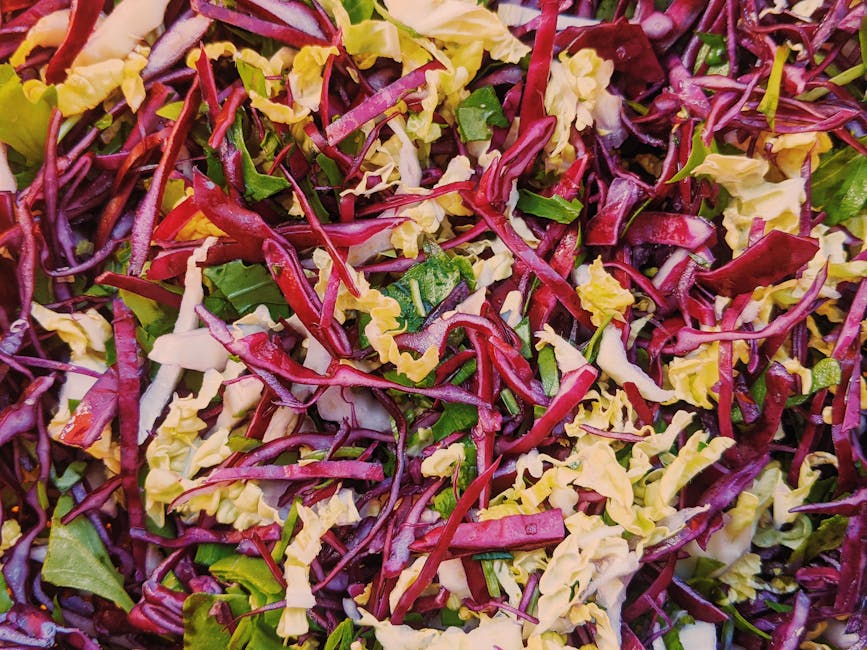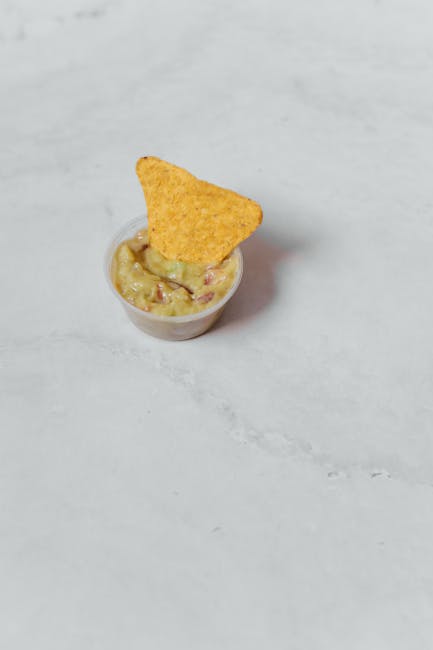Red cabbage, a vibrant and versatile vegetable, boasts a rich history interwoven with culinary traditions across the globe. While its exact origins are debated, evidence points to the Mediterranean region as a likely birthplace, with cultivated varieties appearing centuries ago. Unlike its paler cousin, green cabbage, red cabbage’s deep crimson hue derives from anthocyanins, the same pigments responsible for the color of blueberries and cranberries. These pigments aren’t just visually appealing; they also contribute to the vegetable’s significant nutritional value, packed with vitamin C, vitamin K, and fiber. Interestingly, the intensity of the red color can vary depending on soil conditions and growing practices, leading to a fascinating spectrum of shades from deep burgundy to almost purplish-black.
Throughout history, red cabbage has played a role in various cuisines, finding its way into diverse dishes. In Eastern Europe, it’s a staple in many traditional recipes, often featuring in hearty stews and fermented preparations like sauerkraut. Its use in German cuisine is particularly noteworthy, with dishes like Rotkohl (red cabbage) frequently served alongside roasted meats during festive occasions. In fact, nearly 70% of German households consume red cabbage at least once a month, highlighting its enduring popularity. Beyond Europe, red cabbage has also found its place in Asian and North American cooking, demonstrating its adaptability and global appeal. The methods of preparation are as diverse as its geographic reach, from simple salads and slaws to complex braises and stir-fries.
The simple act of roasting red cabbage, as presented in this recipe, unlocks its natural sweetness and intensifies its flavor profile. Roasting, compared to boiling or steaming, helps to caramelize the sugars within the cabbage, resulting in a beautifully tender and slightly sweet texture. This method also allows the vegetable to retain more of its valuable nutrients, compared to other cooking methods that can lead to leaching. Moreover, roasting enhances the vibrant color of the red cabbage, making it an attractive addition to any meal. The Easy Roasted Red Cabbage recipe presented below aims to showcase the best qualities of this humble yet impressive vegetable, offering a straightforward approach that will appeal to home cooks of all skill levels. It’s a dish that balances simplicity with sophisticated flavor, a testament to the versatility of this underappreciated culinary treasure.
Ingredients and Measurements
This recipe for Easy Roasted Red Cabbage yields a vibrant and flavorful side dish perfect for complementing roasted meats, hearty stews, or even enjoying on its own. The ingredient list is simple, focusing on fresh, high-quality produce to maximize the natural sweetness and depth of flavor in the red cabbage.
Red Cabbage: You’ll need one medium-sized red cabbage (approximately 1.5 to 2 pounds). Choosing a firm, heavy cabbage with tightly packed leaves ensures the best texture and flavor after roasting. Avoid cabbages that show any signs of bruising or damage. Properly prepping the cabbage is key. We’ll be cutting it into wedges, which allows for even cooking and beautiful caramelization.
Olive Oil: Use 2 tablespoons of high-quality extra virgin olive oil. Extra virgin olive oil provides both flavor and health benefits. Its robust character complements the earthy notes of the roasted red cabbage. If you prefer a milder flavor profile, you can substitute with vegetable oil, but the olive oil adds a noticeable richness.
Apple Cider Vinegar: 1 tablespoon of apple cider vinegar adds a delightful tanginess that balances the sweetness of the cabbage beautifully. Apple cider vinegar’s acidity helps to break down the cabbage’s tough fibers, resulting in a more tender texture after roasting. You can substitute with red wine vinegar or balsamic vinegar, but the subtle sweetness of apple cider vinegar is a classic pairing.
Salt and Black Pepper: Season generously with 1 teaspoon of kosher salt and ½ teaspoon of freshly ground black pepper. Kosher salt is preferred for its larger crystals, which allow for more even seasoning. Freshly ground black pepper offers a brighter, more intense flavor compared to pre-ground pepper. Adjust the seasoning to your taste preference; some may prefer a more pronounced saltiness.
Optional Additions for Enhanced Flavor: While these ingredients aren’t essential, they can elevate this simple recipe to new heights. Consider adding:
- 1 tablespoon of maple syrup or brown sugar: To enhance the natural sweetness of the red cabbage.
- ½ teaspoon of caraway seeds or cumin: To add a warm, earthy spice note.
- 2 cloves of garlic, minced: To infuse a savory garlic aroma.
- 1 small red onion, thinly sliced: To add a sharper, more pungent flavor.
Remember to adjust the quantities of optional ingredients to your personal preference. Start with smaller amounts and add more if needed, tasting as you go. This allows you to fully customize the flavor profile of your roasted red cabbage to your liking.
Measurement Equivalents: For those who prefer metric measurements: 1 tablespoon ≈ 15ml, 1 teaspoon ≈ 5ml, 1 pound ≈ 450g.
Equipment List
Roasting red cabbage to perfection requires the right tools. While you might be able to improvise, having the appropriate equipment will significantly improve the outcome and make the process easier and more enjoyable. This list details the essential equipment, along with recommendations and alternatives where applicable.
1. Roasting Pan: A large, heavy-bottomed roasting pan is crucial. This ensures even heat distribution, preventing burning and promoting even roasting of the cabbage. Aim for a pan at least 12 inches in diameter and 2 inches deep. A dark-colored pan will absorb heat more effectively, contributing to a crispier exterior. Avoid using non-stick pans for roasting at high temperatures, as the coating can degrade. A good quality cast iron pan is an excellent investment, providing superior heat retention and even browning.
2. Large Mixing Bowl: You’ll need a large mixing bowl (at least 5-quart capacity) to toss the red cabbage with the oil and seasonings. Choose a bowl that is sufficiently large to comfortably accommodate the entire cut cabbage without overcrowding. Stainless steel or glass bowls are ideal as they provide a neutral surface and are easy to clean.
3. Chef’s Knife: A sharp chef’s knife (8-10 inches) is essential for efficiently slicing the red cabbage. A dull knife will crush the cabbage, releasing more moisture and hindering the roasting process. Regular sharpening is crucial for a clean, precise cut, ensuring even cooking. Consider using a honing steel between uses to maintain the knife’s sharpness.
4. Cutting Board: A sturdy cutting board is essential for protecting your countertop and providing a stable surface for chopping the cabbage. Choose a cutting board made from a material that is easy to clean and resistant to cuts and scratches. A larger cutting board (at least 16×12 inches) is recommended to comfortably accommodate the entire cabbage head. Wood, plastic, or bamboo cutting boards are all acceptable options.
5. Measuring Cups and Spoons: Accurate measurement of the oil and seasonings is vital for achieving optimal flavor and texture. Use a set of standard measuring cups and spoons to ensure consistent results. Invest in a good quality set for accurate measurements, especially when dealing with smaller quantities of ingredients like spices.
6. Tongs or Spatula: You’ll need tongs or a spatula for turning the cabbage during roasting. This ensures even browning and cooking on all sides. Silicone or heat-resistant metal tongs are recommended for handling the hot cabbage and pan safely. A wide spatula can also be useful for flipping larger pieces or scraping up any browned bits from the bottom of the pan.
7. Oven Mitts or Gloves: Oven mitts or heat-resistant gloves are essential for safely handling the hot roasting pan when removing it from the oven. Always use oven mitts or gloves; never attempt to handle a hot pan with bare hands.
Optional Equipment: While not essential, a food processor can be used to quickly shred the red cabbage if you prefer a finer texture. A kitchen scale can also provide more precise measurements of ingredients.
Preparation and Prepping
Roasting red cabbage brings out its natural sweetness and vibrant color. Proper preparation is key to achieving tender, flavorful results. This section details the steps involved in prepping your red cabbage for roasting, ensuring a delicious and visually appealing final dish.
Begin by selecting a firm, dense head of red cabbage. Avoid cabbages with blemishes or soft spots. A medium-sized head (approximately 2 pounds) is ideal for this recipe, but you can easily adjust the quantities to suit your needs. Wash the cabbage thoroughly under cold running water, removing any loose outer leaves. This is crucial to eliminate any dirt or pesticide residue.
Next, we’ll core and slice the cabbage. Using a sharp knife, carefully cut the cabbage in half lengthwise. Then, remove the tough core from the center of each half. This core is inedible and can be quite fibrous, so it’s essential to remove it completely. Don’t worry about being perfectly precise; a few small bits left behind won’t significantly affect the final dish.
Now, it’s time to slice the cabbage. The thickness of your slices will impact the cooking time and texture. For even cooking and a tender result, aim for slices that are about ⅛ inch (3mm) thick. You can use a mandoline slicer for perfectly uniform slices, or a sharp knife will work just as well. Be mindful of your fingers when using a sharp knife; take your time and work steadily.
Once sliced, you can choose to leave the cabbage as is or further prepare it. Some recipes call for massaging the cabbage with a little oil and salt to help it soften and release some of its moisture. This step isn’t strictly necessary, but it can improve the final result. If you choose to massage the cabbage, gently toss the sliced cabbage with 1 tablespoon of olive oil and ½ teaspoon of salt. This helps to tenderize the cabbage and season it evenly.
Finally, consider separating the cabbage slices before roasting. While you can roast the cabbage in a large, compact pile, separating the slices slightly will ensure even cooking and browning. This is especially important if you are using a large amount of cabbage. Arrange the slices in a single layer, or at least in a loose arrangement, on your roasting pan. This will allow for optimal air circulation and prevent steaming.
With your red cabbage properly prepped, you’re ready to move on to the roasting stage. Remember, proper preparation is the foundation for a successful dish. Taking the time to carefully wash, core, slice, and potentially massage your cabbage will pay off in the final flavor and texture.
Roasting Instructions
This recipe for Easy Roasted Red Cabbage yields a tender, caramelized, and deeply flavorful side dish. Following these instructions carefully will ensure perfectly roasted red cabbage every time. We’ll be using a simple technique that maximizes the natural sweetness of the red cabbage while creating a beautiful, slightly crispy exterior.
Prep Time: 15 minutes
Cook Time: 45-55 minutes
Serves: 4-6
Ingredients:
- 1 medium red cabbage (approximately 2 pounds), cored and thinly sliced (about 1/8 inch thick. A mandoline slicer is highly recommended for even slicing.)
- 2 tablespoons olive oil
- 1 tablespoon apple cider vinegar
- 1 teaspoon salt
- 1/2 teaspoon black pepper
- 1/2 teaspoon smoked paprika (optional, but adds a lovely depth of flavor)
Equipment: Large bowl, baking sheet, parchment paper (recommended).
Instructions:
1. Preheat your oven to 400°F (200°C). This is crucial for even roasting. Ensure your oven is properly preheated before placing the cabbage in to avoid uneven cooking.
2. Prepare the red cabbage: Carefully core the red cabbage and thinly slice it. Consistency in slicing is key for even cooking. Thicker slices will require longer cooking times and may remain tough in the center, while thinner slices may burn before they soften. Aim for slices roughly 1/8 inch thick.
3. Toss the cabbage: In a large bowl, combine the sliced red cabbage, olive oil, apple cider vinegar, salt, pepper, and smoked paprika (if using). Use your hands to thoroughly toss the cabbage, ensuring all the slices are evenly coated with the oil and seasonings. This helps to develop the flavors and prevents sticking.
4. Roast the cabbage: Spread the seasoned red cabbage in a single layer on a large baking sheet. Using parchment paper is highly recommended as it prevents sticking and makes cleanup a breeze. If you use a baking sheet without parchment paper, lightly grease it with olive oil.
5. Roast for 45-55 minutes: Roast the cabbage for 45 minutes, then check for doneness. The cabbage should be tender and slightly caramelized around the edges. If it needs more time, roast for another 5-10 minutes, checking frequently to prevent burning. The cooking time may vary depending on your oven and the thickness of your cabbage slices.
6. Serve: Once the cabbage is cooked to your liking, remove it from the oven and let it cool slightly before serving. It’s delicious as a side dish with roasted meats, poultry, or fish. You can also add a squeeze of fresh lemon juice or a sprinkle of fresh herbs before serving to enhance the flavor further.
Professional Tip: For extra flavor, add a tablespoon of maple syrup or brown sugar to the roasting pan during the last 10-15 minutes of cooking. This will deepen the caramelization and add a touch of sweetness.
Serving Suggestions
Easy Roasted Red Cabbage is incredibly versatile and pairs beautifully with a wide array of dishes. Its naturally sweet and subtly tangy flavor profile makes it a fantastic addition to both hearty and lighter meals. Here are some suggestions to elevate your culinary experience:
As a Side Dish: Roasted red cabbage is a stunning and flavorful accompaniment to many main courses. Consider serving it alongside 1-1.5 pounds of roasted chicken or pork, complementing the richness of the meat with the cabbage’s vibrant color and sweetness. A serving of approximately 1/2 cup per person is a good guideline. The roasted cabbage also pairs exceptionally well with grilled meats like sausages or lamb chops. For a truly autumnal feast, serve it with 1.5-2 pounds of slow-cooked beef brisket, allowing the savory flavors to mingle.
In a Hearty Salad: Don’t limit yourself to serving the cabbage solely as a side. Its texture holds up beautifully in salads. Try incorporating it into a warm salad with 4 ounces of crumbled goat cheese, 1/4 cup of toasted walnuts, and 2 tablespoons of balsamic glaze. The warm cabbage will melt the goat cheese slightly, creating a delightful creamy texture. Alternatively, incorporate it into a cooler salad with 6 ounces of grilled chicken or chickpeas, 1/2 cup of dried cranberries, and a citrus vinaigrette. Aim for a ratio of approximately 1 cup of roasted red cabbage to 2 cups of other salad ingredients for a balanced and flavorful salad.
As a Flavor Booster in Other Dishes: The roasted red cabbage can be finely chopped and added to various dishes to enhance their flavor and texture. For example, include 1/2 cup of finely chopped roasted red cabbage in your favorite stuffing recipe for a surprising burst of sweetness and color. You can also add it to hearty soups or stews in the final stages of cooking, about 1 cup per 6-8 servings, to add depth and visual appeal. The sweetness of the cabbage works wonders in balancing the richness of hearty winter stews.
Tips for Serving: Presentation matters! Arrange the roasted red cabbage attractively on a platter or in a serving bowl. Consider leaving some pieces slightly larger for visual appeal. Maintain the warmth of the cabbage by keeping it in a warm oven (around 200°F) until ready to serve. Don’t overcook the cabbage; it should retain a slight bite. Garnish with fresh herbs like parsley or thyme for an added touch of freshness and visual appeal. A sprinkle of toasted nuts or seeds can also add texture and flavor.
Experiment and Enjoy! The beauty of roasted red cabbage is its adaptability. Don’t be afraid to experiment with different flavor combinations and serving styles to find your perfect match. The recipes and suggestions provided here are merely starting points; feel free to let your creativity guide you.
Tips and Tricks for Perfect Roasting
Roasting red cabbage brings out its naturally sweet and slightly peppery flavor, creating a delicious side dish or even a vibrant addition to a main course. To achieve perfectly roasted red cabbage, follow these tips and tricks for optimal results.
Prep is Key: Begin by properly preparing your red cabbage. First, remove the tough core. Then, thinly slice the cabbage. Aim for slices about ⅛ inch thick. This ensures even cooking and prevents some parts from becoming mushy while others remain raw. Using a mandoline slicer can help achieve uniform thickness for consistent roasting.
Seasoning Matters: Don’t underestimate the power of seasoning! Generously season your sliced cabbage with salt and freshly ground black pepper. About 1 teaspoon of salt and ½ teaspoon of black pepper for a medium-sized red cabbage (approximately 2 pounds) is a good starting point. Feel free to adjust to your taste. Don’t be shy with the salt; it helps draw out moisture and enhances the flavor.
Fat is Your Friend: Roasting requires fat to help the cabbage caramelize and develop a rich flavor. Use about 2 tablespoons of olive oil or another high-heat oil like avocado oil. Toss the sliced cabbage with the oil and seasonings until every piece is evenly coated. This ensures consistent browning and prevents sticking.
Roasting Temperature and Time: The ideal roasting temperature is 400°F (200°C). Spread the seasoned cabbage in a single layer on a large baking sheet. Overcrowding will lead to steaming instead of roasting. Roast for approximately 30-40 minutes, flipping halfway through. Keep a close eye on it, as ovens vary. The cabbage is done when it’s tender, slightly caramelized, and has a deep reddish-purple color. Don’t overcook; slightly crisp edges are desirable.
Adding Flavor Boosters: To elevate your roasted red cabbage, consider adding other ingredients. A tablespoon of balsamic vinegar added during the last 10 minutes of roasting will add a tangy sweetness. A sprinkle of fresh herbs like thyme or rosemary can also enhance the flavor profile. Consider adding a few cloves of thinly sliced garlic during the roasting process for an extra layer of savory complexity. Experiment with different combinations to find your favorite flavor profile.
Don’t Forget the Rest: Once roasted, allow the cabbage to rest for a few minutes before serving. This allows the flavors to meld and the cabbage to retain more moisture. The resting period also helps the cabbage cool slightly, making it more pleasant to eat.
Storage: Leftover roasted red cabbage can be stored in an airtight container in the refrigerator for up to 3 days. It’s delicious cold or reheated gently in a pan or microwave.
By following these tips and tricks, you’ll consistently achieve perfectly roasted red cabbage that is both flavorful and visually appealing. Enjoy!
Recommendations for Easy Roasted Red Cabbage
This Easy Roasted Red Cabbage recipe is a delicious and versatile side dish perfect for any occasion. To make the most of this recipe and elevate your dining experience, consider the following recommendations.
Serving Suggestions: The slightly sweet and tangy flavor profile of roasted red cabbage pairs beautifully with a variety of main courses. It’s an excellent accompaniment to roasted meats, especially pork, duck, and sausages. The richness of the roasted cabbage cuts through the fattiness of these meats, creating a balanced and satisfying meal. It also works wonderfully with hearty vegetarian dishes like lentil stews or mushroom-based ragouts. For a truly special presentation, consider serving the roasted cabbage as a bed for pan-seared scallops or grilled halloumi cheese. A sprinkle of fresh herbs, such as parsley or thyme, just before serving adds a final touch of freshness and aroma.
Complementary Dishes: To build a complete and flavorful meal, consider pairing your Easy Roasted Red Cabbage with other complementary dishes. A creamy mashed potato or polenta can provide a comforting counterpoint to the slightly sharper cabbage. A simple green salad with a light vinaigrette adds a refreshing element to the meal. Alternatively, consider serving it alongside roasted root vegetables like carrots, parsnips, or sweet potatoes for a vibrant and colorful autumnal spread. If you’re looking for a more sophisticated pairing, a light apple cider reduction or balsamic glaze drizzled over the roasted cabbage can add a touch of elegance.
Storage Conditions: For optimal freshness and flavor, store leftover roasted red cabbage in an airtight container in the refrigerator. It will keep well for up to 3-4 days. To reheat, simply place the cabbage in a microwave-safe dish and heat until warmed through, or gently reheat in a pan over medium heat, adding a splash of water or broth to prevent it from drying out. Freezing is also possible, but the texture might slightly alter after thawing. If freezing, ensure the cabbage is completely cooled before placing it in a freezer-safe container or bag.
Calorie and Nutritional Information (per serving, approximate): The exact nutritional content will vary depending on the size of the cabbage and the amount of added oil or fat. However, a typical serving of Easy Roasted Red Cabbage will contain roughly 150-200 calories. It’s a good source of vitamin C, fiber, and antioxidants. It is also relatively low in fat and sodium. Please note that this is an estimate, and for precise nutritional values, consult a nutrition calculator using the specific ingredients and quantities used in your preparation.
Important Note: While this recipe is generally easy to follow, feel free to adjust the cooking time and seasoning to your preference. If you prefer a crispier texture, increase the roasting time slightly. If you prefer a softer texture, reduce the roasting time. Don’t hesitate to experiment with different herbs and spices to create your own unique flavor combinations.





